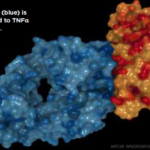NEW YORK (Reuters Health)—Inappropriate underprescribing of medications is associated with increased mortality and hospitalization rates among community-dwelling adults aged 80 years and older, researchers from Belgium report.
“Patients with five or more medications (a standard cut-off used for polypharmacy) can have a well-tailored and balanced medication therapy with an acceptable risk for adverse events,” Dr. Maarten Wauters from Ghent University in Belgium tells Reuters Health.
“Yet, in contrast,” he adds, “patients with just a few medications could be at risk missing essential and beneficial medications. This is pressing us to carefully balance the benefit and risk of each drug on the list of older adults.”
Dr. Wauters and colleagues investigated the prevalence of inappropriate prescribing and its possible associations with mortality and hospitalization after 18 months among 503 community-dwelling patients aged 80 and over in the Belfrail-Med cohort.
They assessed prescribing with the clinically oriented Screening Tool for Older Person’s Prescriptions (STOPP-2 criteria) for misuse and the Screening Tool to Alert doctors to Write Treatment (START-2) for underuse.
The average number of medications among these participants was 5.4 (range, 0–16), and 57.7% of the population had received at least five medications, according to the July 18th British Journal of Clinical Pharmacology online report.
Two-thirds of the population had underuse, 56.1% had misuse, and only 17.1% had neither underuse nor misuse. Four in 10 participants (40.2%) had a combination of underuse with misuse.
The overall mortality rate after 18 months was 8.9%, and the hospitalization rate was 31%. Survival rates were 97% with no underuse, 96% with low underuse, and 88% with high underuse. Survival free of hospitalization after one year was 85% with no underuse, 81% with low underuse and 59% with high underuse.
Mortality and hospitalization rates did not differ according to category of misuse, the researchers note, but the study may have been underpowered to identify these relationships.
In multivariate analysis, every additional underused medication was associated with a 39% increased risk for mortality and a 26% increased risk for hospitalization after 18 months.
High underuse (three or more “missing” medications) was associated with a 2.9-fold increased risk for mortality and a 2.1-fold risk for hospitalization, compared with no underuse.
“Assessing misuse and underuse continuously, and (preferably) in a multidisciplinary way involving pharmacists, nurses, or clinical pharmacologists, can help prescribers and pharmacists to adapt the medication regime to the patient’s context,” Dr. Wauters says. “Clinical pharmacologists can aid prescribers as well, by setting up electronic systems for monitoring the quality of prescribing, using evidence-based criteria of potentially inappropriate prescribing.”
Dr. Denis O’Mahony, a geriatrician from University College Cork and Cork University Hospital, Wilton, Cork, Ireland, tells Reuters Health, “For those who must prescribe for older multimorbid patients, one can use tools like the STOPP/START criteria to screen for potentially inappropriate medications (PIMs) and potential prescribing omissions (PPOs). Also, the routine use of drug-drug and drug-disease interaction databases can be helpful for optimizing prescriptions. Keeping a sensible limit on the number of prescription medicines should be considered also, particularly in patients with a life expectancy that is likely less than one year.”
“We have just recently published new data from a single center cluster randomized controlled trial here in Cork showing that single time point deployment of STOPP/START criteria early in the emergency admissions of older people admitted under the care of services other than specialist Geriatric Medicine results in an approximate halving of the rate of incident adverse drug reactions during the index admission,” Dr. O’Mahony said. “A few years ago, we showed in another single center randomized controlled trial that a similar intervention resulted in a highly significant and sustained improvement in medication appropriateness.”



